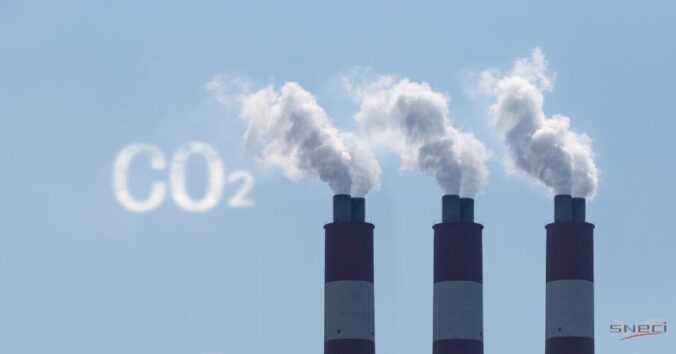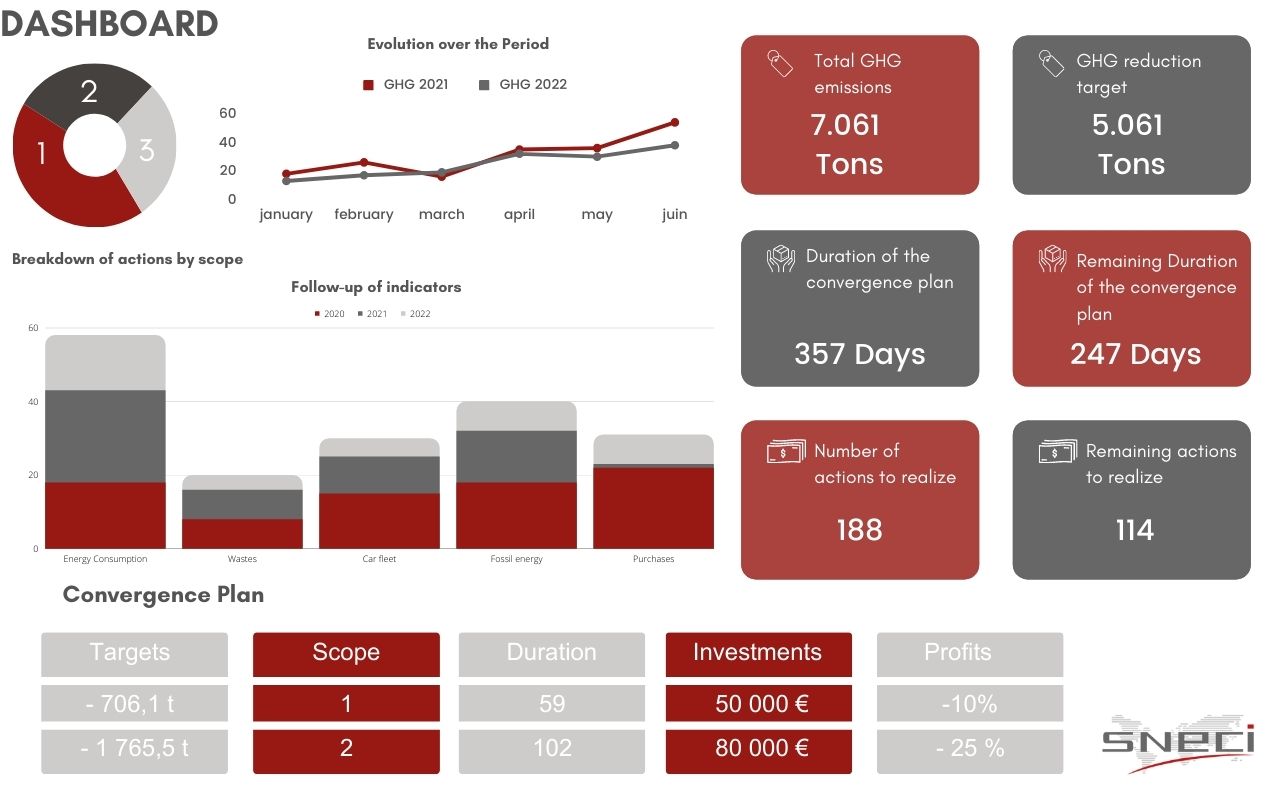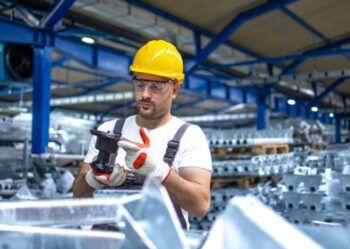Become a major player in the energy transition with a 5-step decarbonization plan

Decarbonizing the industry in 5 steps allows to reach carbon neutrality and thus to become a major actor of the energy transition. Why decarbonize? How to set up a decarbonization plan, what resources are needed and who should accompany you? These are just some of the questions that we will answer together.
The 5-step decarbonation plan validated by ADEME has been defined with engineers, industrialists and research departments and allows companies to save energy or to better control their dependence on fossil fuels in order to increase their profitability.
The objective is to take control of the energy transition not only to achieve carbon neutrality but also because it represents a significant competitive advantage nowadays and allows to enhance the image of a company.
Indeed, implementing a low-carbon strategy allows to :
- Diagnose the current strategy or the decarbonization actions
- Define the action levers that will significantly reduce the company’s emissions
- Evaluate their priorities in relation to external issues and the company’s ambition
As with many change processes, this can often seem difficult to implement or even restrictive, which is why today we are going to explain how to structure your decarbonization plan in 5 key steps.
The first step is to structure your approach:
Indeed, there is no point in embarking on a decarbonation plan without first asking the right questions, which is a prerequisite for any approach to environmental transition.
It is a prerequisite for any approach to environmental transition. It is therefore necessary to ask the following questions, a bit like a SWOT analysis:
- What are my ambitions?
- At what level do I want to intervene?
- How do I set up an energy management system?
- How do I develop a financing plan?
- What impacts on my image?
- What impact on my competitiveness ?
- ….
To start this first phase of reflection, SNECI can help you answer the questions necessary to structure your approach.
The second step consists in realizing a balance sheet of the current situation
Indeed, once the direction is determined, it is essential to realize a balance sheet to better understand which actors emit CO2 and in what quantities. These are emissions related to machines, vehicles, and all sources controlled by the organization without forgetting the emissions associated with the production of electricity, heat or steam imported for the activities of the organization and other emissions related to the value chain, typically the purchase of goods and services, the use of products, travel….
The balance sheet allows us to apply the concept of identifying, offsetting and regulating.
To do this, the GHG audit provides a clear and quantified picture of the situation. Indeed, what are the items concerned, what is the consumption of the different items concerned, what energy is used and to what extent?
We must not forget the regulatory and legal issues, in fact each sector has its own specificities and to do this SNECI accompanies you to identify through our ISA AUDIT tool, the different GHG emitting items and in what proportions as well as the applicable regulations according to your sector and location
This carbon audit will allow you to evaluate what has already been done before and to identify ways to improve the energy efficiency of the production site.
Don’t forget that carrying out your carbon audit requires involving not only management, but also employees, suppliers and partners with the same objectives for all, namely
- To anticipate new constraints in terms of performance
- Stand out from your competitors by being exemplary
- To comply with the regulations in force
An audit represents 10 to 25% of the company’s potential savings on its annual energy bill. Our audit covers criteria ranging from procurement to waste treatment
Did you know? The Energy Code requires large companies with more than 250 employees to conduct an energy audit in order to implement an energy efficiency strategy for their activities. The energy audit makes it possible to identify energy saving opportunities for the largest professional consumers (tertiary and industrial). If the investments recommended by the audit are made, the energy savings can be up to 30%, depending on the type of activity, and more than 50% for the portion of consumption related to buildings.
Step 3 consists in reducing your consumption through the convergence plan resulting from your audit
Once the process is structured and the inventory is done, you will be able to know the different sources of GHG emissions and thus reduce not only your energy consumption but also your raw materials consumption, a key step in any decarbonization process.
How can you do this? By implementing a convergence plan that follows naturally from your audit. Indeed, the carbon audit is an essential preliminary diagnosis allowing to identify possible optimizations and to create a precise action plan adapted to your situation.
This action plan will aim at defining which energies you really have and how to regulate your emission rate in order to determine the energy needs inherent to your process and to answer the questions of profitability in the short and medium term.
It is important to remember that improving the energy efficiency of a company is an important preliminary step in any decarbonization process. By reducing resource consumption and waste, it allows the company to optimize its profits while participating in the green transition.
Step 4 is to use decarbonized energy
We talked about it earlier, but the principle of decarbonation is based on the identification, compensation and reduction of GHG.
To this end, depending on your activity, and in order to switch to decarbonized energies, you can either switch to all-electricity or use renewable and recovery energy sources (RE&R).
Remember that reducing energy and material consumption is a key step in any decarbonization process. Start by improving energy efficiency before integrating renewable and recovered energy sources.
At SNECI, we also support you in this phase of identifying the investments and financing necessary for the implementation of 100% electric or RE&R solutions.
Did you know that? Each site can be powered by at least one renewable energy source (RE&R). RE&R) have a great potential of integration. Moreover, some industrial companies already produce and consume energy on their sites.
Step 5 consists in developing one’s potential and cooperating
Last step of the decarbonation plan and finally the most gratifying since it means that you have already put everything in place and that you are in a process of collaboration, communication and valorisation of your actions.
When we talk about collaboration, we are talking about sharing costs and/or energy by recycling excess energy by selling it, or by using electrical equipment in exchange for payment, and by giving it to professionals who know how to recycle waste.
This approach allows you to go as far as waste treatment but also represents a virtuous circle where there are no losses or excess emissions. By selling renewable and recovered heat, you ensure a sustainable source of income. In terms of image and profitability it is a godsend.
Moreover, selling heat is an economic asset offering a constant source of income to the company, it also allows to create synergies in the local economic and environmental fields and thus to contribute to the decarbonization of the local energy balance.
Getting involved in the sale of heat is not always easy, which is why SNECI will support you in implementing your decarbonization plan.
SNECI and the support of industrial companies in decarbonisation
With 70 years of experience, 450 experts and 10 subsidiaries in each country, SNECI assists companies around the world in implementing a customized decarbonization plan through
- Direct involvement of your management
- Taking into account the precise objectives to be reached through the GHG assessment
- Support for the organization in carrying out the GHG assessments
- The creation of a project team that will carry out the study internally
- Allocation of adequate time resources for the people in charge of its realization internally
- Definition and implementation of the convergence plan
- The search for funding and other potential assistance for the implementation of a decarbonation plan
- Support in the implementation of the convergence plan.
- Regular reporting on the progress of the decarbonization process

If you wish to benefit a carbon audit and set up a decarbonization plan for your company, contact Laura by email laura@sneci.com who will see with you how to accompany you according to your needs and your issues.






